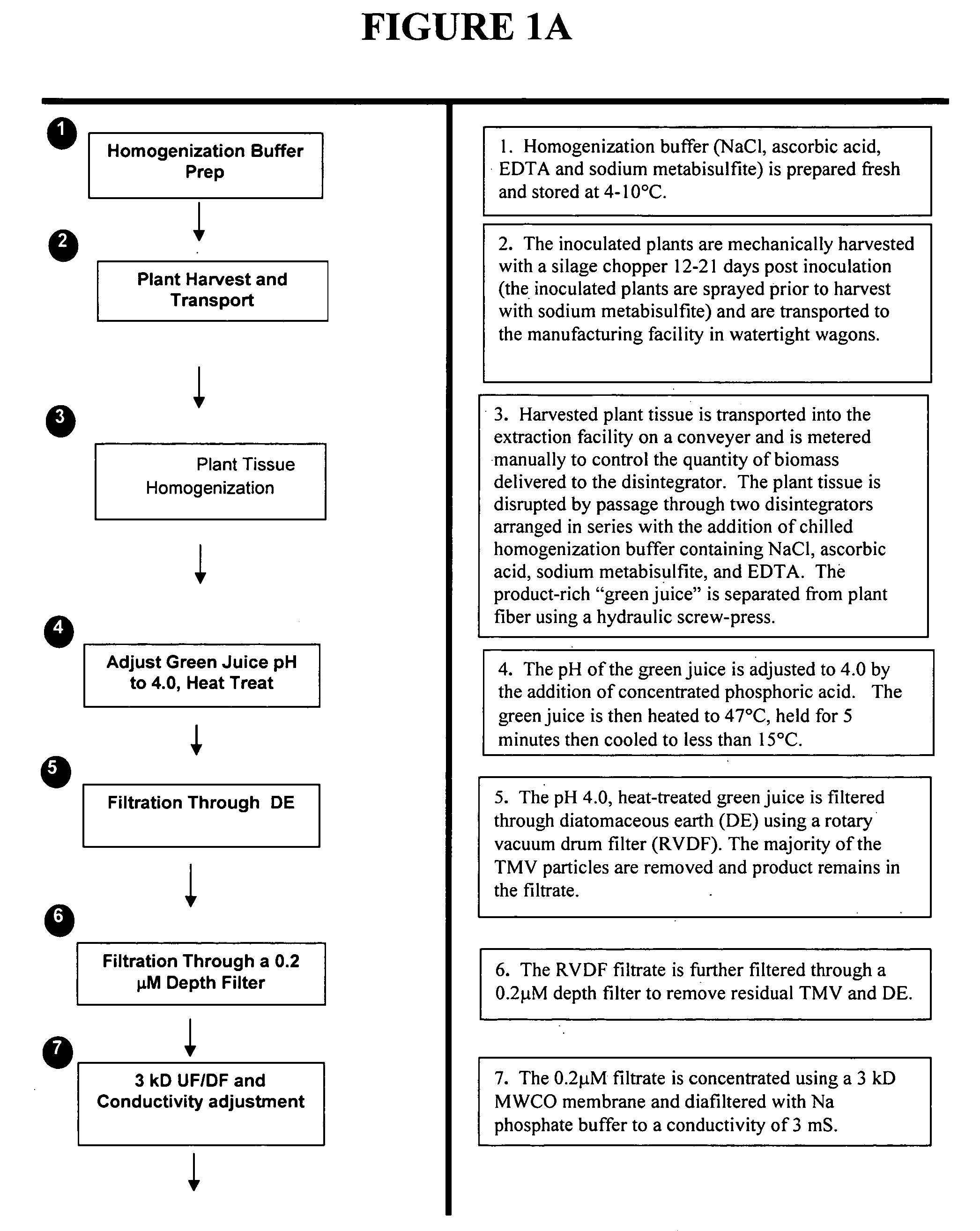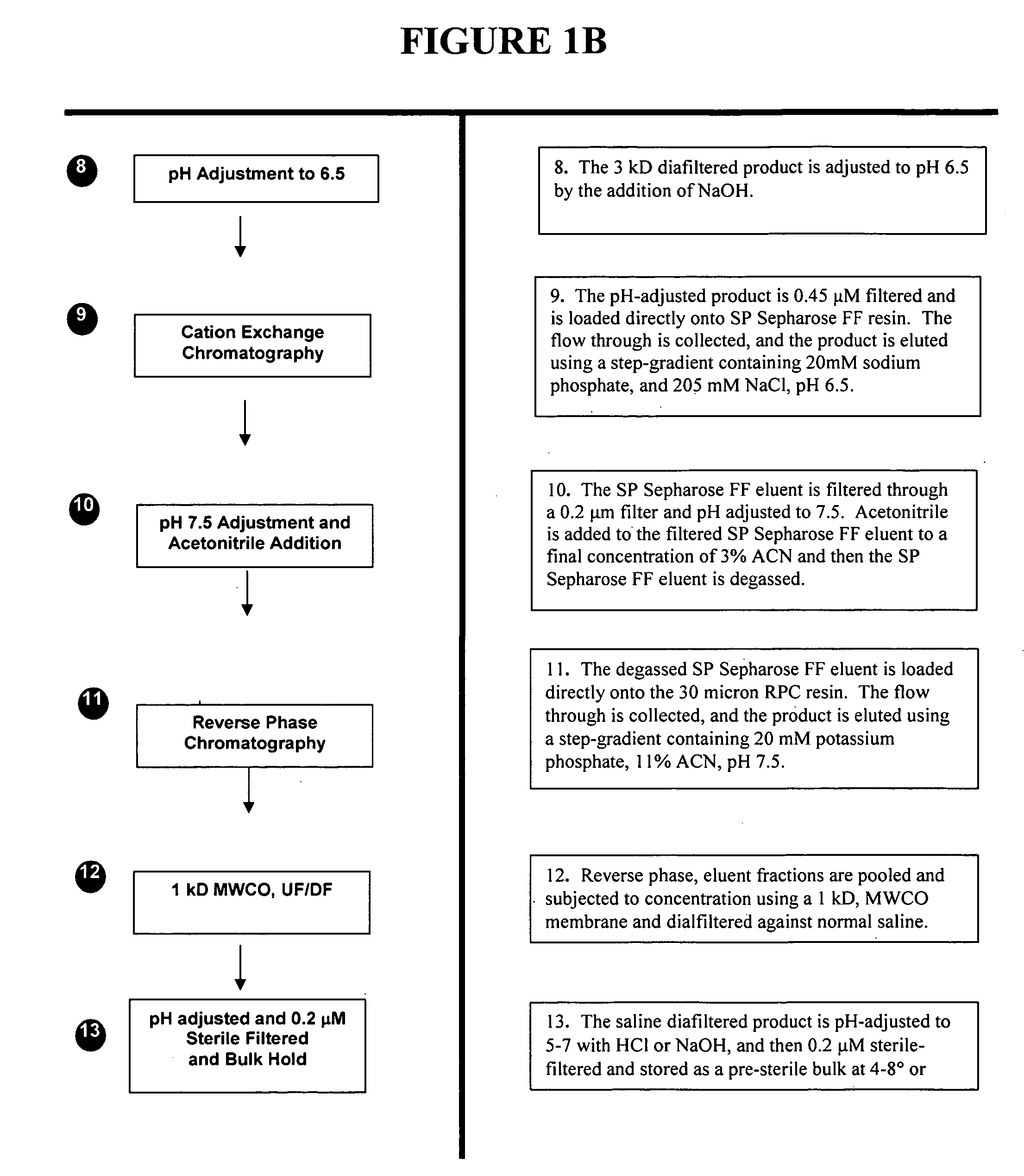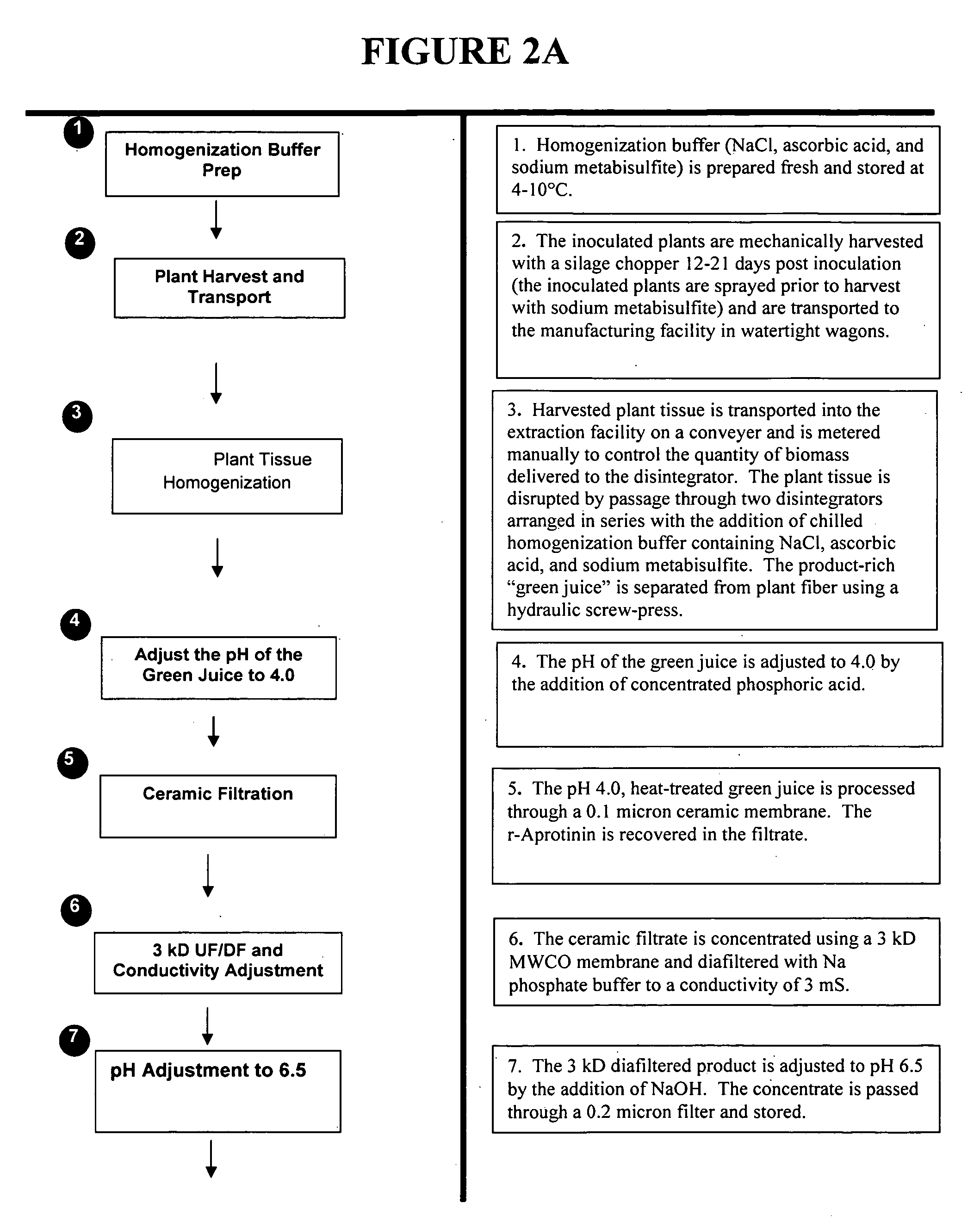Plant-produced recombinant aprotinin and aprotinin variants
a technology of aprotinin and bovine lung, which is applied in the field of plant-produced recombinant bovine lung aprotinin and variants, can solve the problems of potential risks for patients of animal origin impurities and contaminants
- Summary
- Abstract
- Description
- Claims
- Application Information
AI Technical Summary
Problems solved by technology
Method used
Image
Examples
example 1
[0078] The bovine cDNA sequence (Genbank accession # X05274; Creighton. and Charles. (1987)), covering the coding region of the mature aprotinin protein (amino acid residues #1-58 of SEQ ID NO: 2), was synthesized and fused to the coding region for a plant signal peptide sequence derived from the N. benthamiana gene (amino acids #-1-26 of SEQ ID NO: 1) that has homology to the N. plumbaginifolia extensin gene (Genbank accession # M34371; De Loose et al (1991)). This chimeric gene was cloned into the TMV-based expression vector DN5 via Pacd and XhoI cloning sites to generate the plasmid pLSB2602, set forth in SEQ ID NO: 3. The DN5 vector is a recombinant vector containing most of the TMV genome (U1 strain replicase and movement proteins) and part of the tobacco mild green mosaic virus genome (TMGMV; U5 strain coat protein and 3′ nontranslated region) in a pUC plasmid. This arrangement of U1 and U5 sequences provides an extra subgenomic promoter for expression o...
example 2
Characterization of Plant-Produced r-Aprotinin
[0110] Representative plants are extracted at 14 days post inoculation by a homogenization method and analyzed for the presence of aprotinin protein and activity. Leaves are weighed and ground in the extraction buffer (250 mM NaCl, 0.264% iso-ascorbic acid, 0.1% sodium metabisulfite, 5 mM EDTA, pH 4). The pH of this homogenate is adjusted to 4.0 and clarified by centriftigation at 10,000×g for 10 minutes. The supernatant fraction is saved for sodium dodecyl sulfate-polyacrylamide gel electrophoresis (SDS-PAGE analysis) and activity analyses.
[0111] The supernatant fraction is also analyzed for its ability to inhibit the proteolytic activity of porcine trypsin (Fritz et al, 1966; Kassell, 1970). The inhibitory effect of aprotinin on porcine trypsin is determined by monitoring the release of p-nitroaniline from the substrate N-a-benzoyl-L-arginine-p-nitranilide (BAPA). One trypsin inhibitory unit (IU) of BAPA is defined as the amount of i...
example 3
Scale-Up of Production and Purification of r-Aprotinin.
[0114]Nicotiana seeds lots, including those from Nicotiana excelsiana, are generated from plants that are grown to maturity in a clean, isolated environment. The seed is characterized based on the morphology of a mature plant, susceptibility to TMV-based vector infection as well as yield and quality of a standardized r-Aprotinin product.
[0115] The characterized Nicotiana seeds are used to propagate plants for r-Aprotinin production. These seed lots are coated with a clay-based pellet to increase individual seed size and improve handling during the seeding process. Pelletized seed is tested regularly for germination rate.
[0116] Standard agronomic practices are utilized for field production. Multiple disk harrowing and cultivation passes are used to prepare the field for transplanting. Fertilizers are applied according to recommendations provide by soil test analysis. Pre-planting soil-applied treatments are applied according t...
PUM
| Property | Measurement | Unit |
|---|---|---|
| temperature | aaaaa | aaaaa |
| temperature | aaaaa | aaaaa |
| final volume | aaaaa | aaaaa |
Abstract
Description
Claims
Application Information
 Login to View More
Login to View More - R&D
- Intellectual Property
- Life Sciences
- Materials
- Tech Scout
- Unparalleled Data Quality
- Higher Quality Content
- 60% Fewer Hallucinations
Browse by: Latest US Patents, China's latest patents, Technical Efficacy Thesaurus, Application Domain, Technology Topic, Popular Technical Reports.
© 2025 PatSnap. All rights reserved.Legal|Privacy policy|Modern Slavery Act Transparency Statement|Sitemap|About US| Contact US: help@patsnap.com



